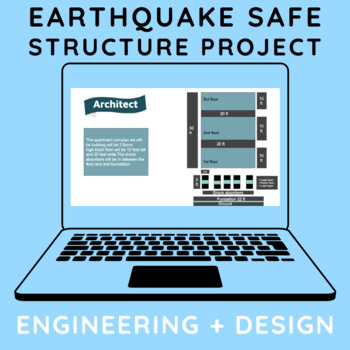Earthquake Safe Buildings Project
- Google Docs™

Description
Build engineering skills while assessing your student's Plate Tectonics knowledge! This creative, inquiry-based, and student-centered earthquake safe buildings project walks students through the research, construction, and write-up of an earthquake-safe building using architectural safety design features. Students are asked to write a real estate development proposal to construct a new building in an earthquake-prone city. The subsequent tasks include explaining why their chosen city has seismic activity, how one chosen safety architectural feature protects the building, drawing a blueprint, and constructing a 3D model of the building. Students also must consider the impact of their building on the needs of the community. This project can be done alone or in groups of two, three, or four, and the included student roles vary to support learners of all preferences and include varied prompts to research, build a model, draw, and write.
This product includes a project write-up, instructions, graphic organizer for each team role, sentence frames, and a rubric. This product can be modified to fit your class and your curriculum. This would work well in a project-based learning classroom as well as any Science or Engineering class. Use this project to conclude your unit on Plate Tectonics or in your Engineering course to have students play the role of architect! This product appeals to a broad range of learners, as it allows students to creatively demonstrate their learning and choose topics and tasks that are most interesting and exciting to each learner.
This packet was successfully used in 9th and 12th grade classrooms but is also designed to be accessible for middle school students.
Check out more Plate Tectonics resources from EnvironmentLA below!
Evidence for Continental Drift Stations
Check out more hands-on projects from EnvironmentLA below!



